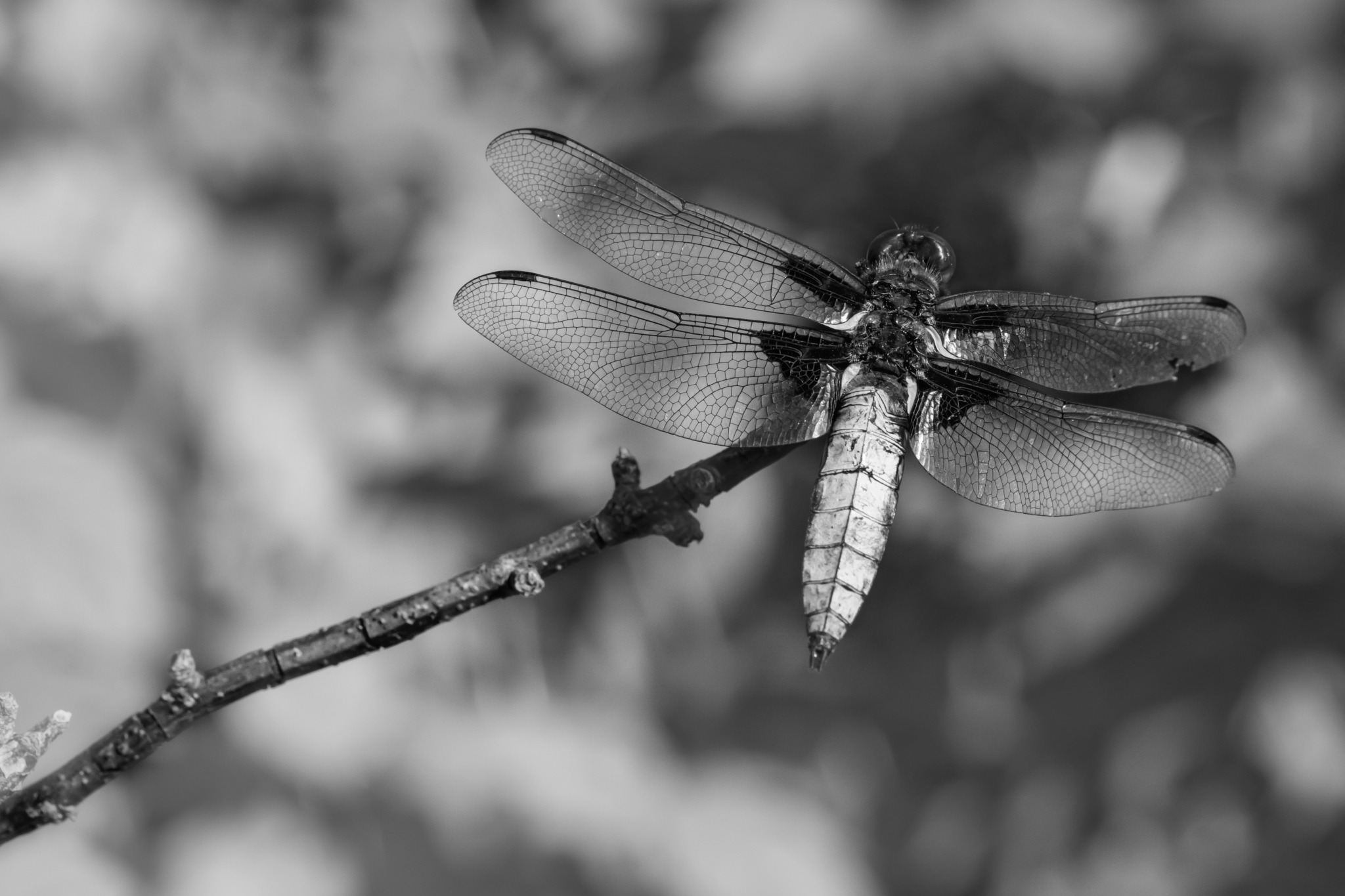The Four-spotted Chaser (Libellula quadrimaculata) is a dragonfly species belonging to the family Libellulidae. Here are some key characteristics and information about this fascinating insect:
- Appearance: As the name suggests, the Four-spotted Chaser is characterized by its distinctive wing pattern, featuring a dark spot near the center of each of its four wings. Its body is robust and has a yellowish-brown coloration. Males typically have a bluish-white pruinescence (a powdery coating) on their abdomen, while females have a more subdued coloration.
- Distribution: The Four-spotted Chaser is found across much of Europe and parts of Asia, including the British Isles, mainland Europe, Scandinavia, and Siberia. It inhabits a variety of freshwater habitats, including ponds, lakes, slow-flowing rivers, and marshes.
- Habitat: These dragonflies prefer habitats with abundant vegetation and open water, where they can find suitable breeding sites and foraging opportunities. They are often found near the edges of water bodies, where they can bask in the sun and hunt for prey.
- Behavior: Four-spotted Chasers are active during the warmer months of the year, typically from spring to autumn. They are strong and agile fliers, capable of rapid flight and maneuvering. They are also territorial insects and may defend their breeding territories against intruders, including other dragonflies.
- Diet: As nymphs (larvae), Four-spotted Chasers are aquatic predators, feeding on a variety of small aquatic invertebrates, including mosquito larvae, aquatic insects, and small fish. As adults, they prey on flying insects such as mosquitoes, flies, and midges, which they catch on the wing.
- Reproduction: Mating behavior in Four-spotted Chasers involves elaborate courtship displays, with males performing aerial acrobatics and territorial patrols to attract females. After mating, females lay their eggs in aquatic vegetation or directly into the water. The eggs hatch into aquatic nymphs, which undergo several molts before emerging as adults.
- Conservation: The Four-spotted Chaser is not considered globally threatened, and its population appears to be stable. However, like many dragonfly species, it may face threats from habitat loss, water pollution, and climate change. Conservation efforts focus on preserving and restoring freshwater habitats, including the creation of artificial ponds and wetlands.
Overall, the Four-spotted Chaser is a beautiful and ecologically important insect species that plays a valuable role in freshwater ecosystems as both predators and prey. Its distinctive appearance and behavior make it a favorite among dragonfly enthusiasts and nature lovers.
Visited 169 times, 19 visit(s) today
Views: 308
Subscribe to the newsletter:
